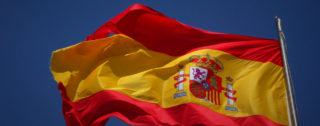Spanish language facts
The Spanish language, otherwise known as ‘Castellano’, in Spain, is extended across the globe. Being the third with the highest number of native speakers, Spanish is the mother tongue of approximately 330 million people in 21 countries. The language of Cervantes, Picasso and García M árquez is already the second world language as a vehicle of international communication and the third as an international language of politics, economics and culture.
Spain has one of Europe’s fastest growing economies, while the Latin American countries are following the same pattern: the creation of Mercosur and many other free trade agreements between South American countries and North America (ALADI, the Andean Community, CACM, NAFTA, G3) which already exist in order to improve the economies of these countries, are making them more efficient and competitive. In the US, the Hispanic population has grown by 60 per cent in just one decade.
There are some significant differences between Continental and Latin-American Spanish (e.g., a “lapicero” is a pencil holder in some areas and a ball-point pen in others, while a computer is “un ordenador” in Spain but “una computadora” in Latin America). In order to better grasp the differences and similarities in written language, it is vital to use Spanish language services.
Other languages spoken in Spain include “Galician” (North-West), “Catalonian” (East) and “Basque”, which is spoken in the North-East of Spain and in a small swathe of France.
Roots of Spanish language
Spanish is a Romance language, meaning that it is a vernacular descendant of Latin, the official language of the Roman Empire and a branch of the Indo-European. In addition to Spanish, the Romance group includes Portuguese, French, Italian, Rumanian, Galician, Sardinian and Catalan languages, as well as dialects such as Occitan and Rheto-Romance.
Like the other Romance languages, Spanish is derived from Vulgar Latin, the cluster of dialects spoken by legionaries, traders, farmers and the like. Vulgar Latin was presumably always subject to considerable geographical variation, although not to the extent of becoming unintelligible by Latin speakers from different parts of the Roman Empire.
Regional varieties gradually drifted apart, a process that can only have accelerated after the Western Empire collapsed in the 5th century and the old Roman provinces were overrun by Germanic tribes (Franks, Burgundians, Swabians, Visigoths and so forth).
There are, then, no precise moments when the modern Romance languages were born. In the case of Spanish texts from the Castile area (the county the languages came from) begin to exhibit Romance features from the 10th century onwards, but the 12th-century texts are the first that have a clear Spanish look. As ever, though, writing would have lagged behind speech, especially as for centuries, an established orthography existed for Latin but not for the emerging Romance vernaculars.
Spanish has its roots in the rustic Latin of southern Cantabria and has grown from an obscure provincial dialect to the rise of Castile kingdom. Initially a small enclave on the eastern edge of the kingdom of Len, Castile played a leading role in the Reconquest (after Islamic occupation), expanded progressively southwards and, by the 14th century, controlled all of the Peninsula except Portugal, Navarre, Aragon and the surviving Muslin kingdom of Granada.
With the unification of Castile and Aragon in 1479 by the Catholic Kings, the modern Spanish nation-state was born and shortly afterwards Columbus’s discovery of America initiated a new colonial phase. In this way, the language of Castile came to dominate not just in the Peninsula (with the notable exceptions of Portugal, Galicia, the Basque Country and Catalonia) but, from the 16th century onwards, in the American colonies too. The year of 1611 saw the publication of the first Spanish dictionary, by Sebastian de Covarrubias.
An influx of new words
Spanish became the major diplomatic language until the eighteenth century. The lexicon at this time began to incorporate a large body of words from other languages, both European and Native American. From Italian came such new words as: “soneto”, “medalla” and “piano”. Gallicisms included: “jard¬n” and “sargento”. Words like “patata”, “cndor”, “alpaca” and “puma” came from Quechua and Guarani. From the family of Nahuatl languages came such familiar vocabulary as: “chocolate”, “tomate” and “cacao”.
Spanish Today
In 1713, the Real Academia Espaola was founded. It established authoritative criteria for the sanctioning of neologisms and the incorporation of international words. Spanish grammar was formalised during this period and there was a great flourish in Hispanic literature, helped by Spanish’s relatively free word order, creating a variety of diverse literary styles.
The twentieth century has seen further alterations in how Spanish is used by its speakers. The eruption of neologisms, fuelled by technological and scientific advances, remains unabated. They range from the classic: “termmetro”, “¡tomo” and “psicoan¡lisis” to the most modern and barely hispanicised: “filmar”, “radar”, “casete”, “PC” and “mdem”
Contact Us
Click here to get in touchCopyright Notice:
Third parties are allowed to use or reference information on this page for non-commercial use only if they acknowledge this website as the source by linking to it.
Read detailed Terms and Conditions on how to apply for commercial use.











